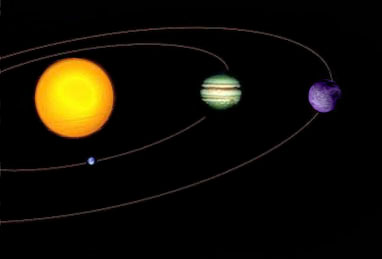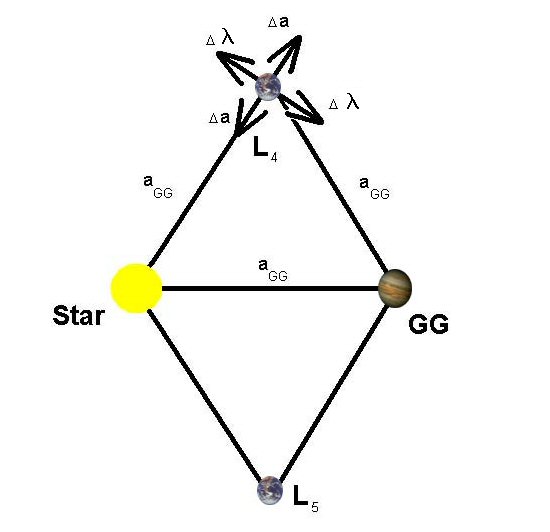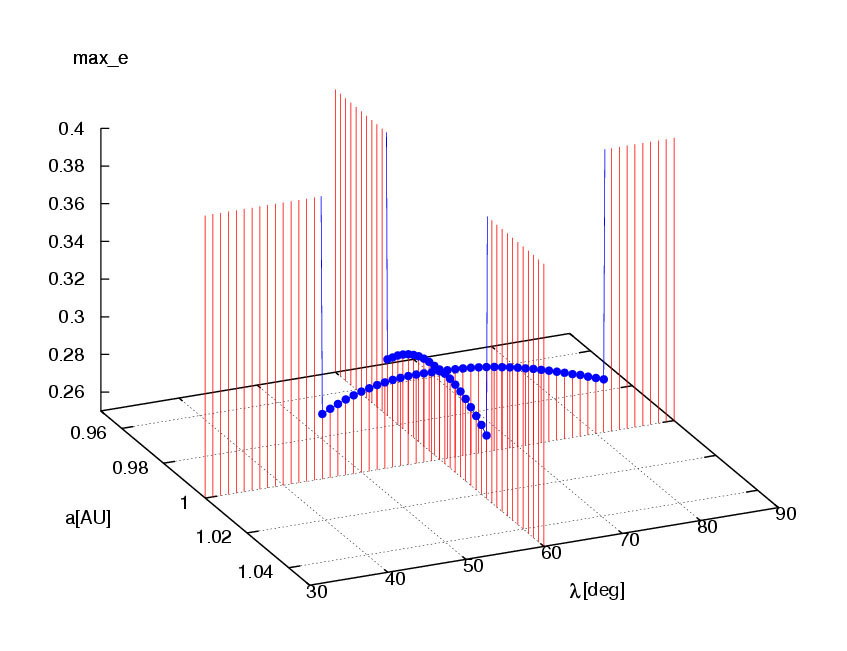






 |
Catalogue
Results
We know more than 220 extrasolar planets in 180 planetary systems,
among them 15 binary systems and 20 multiplanetary systems
(see the catalogue maintained by
Jean Schneider).
Only 12 single-star systems have a giant planet partly or
fully in the HZ (see Table 1), where the eccentricity is <
0.25 . A small eccentricity is very important for the dynamical
stability and also for the habitability.
In this work we study the dynamical possibility in extrasolar planetary systems that a terrestrial planet can exist
in 1:1 mean motion resonance with a Jovian-like planet. We compiled a catalogue for hypothetical habitable Trojan
planets, to be able to make a stability foresight for further extrasolar planetary systems discovered in future. When we
speak of habitability we took also into account the infuence of the spectral type of the central star.
Fig. 1 Fig. 2
Fig. 2
Determination of the stable area
In Fig. 1 we show how we have chosen the initial conditions around
the Lagrangian point L4: in one direction, along the connecting
line of the star and the Trojan planet (see ΔaGG
in Fig. 2), we changed the normalised semimajor axis a
of the Trojan planet, in the other direction we changed the synodic longitude λ.
We changed the semimajor axis 0.9 < a < 1.1 with a gridsize Δa = 0.0025
and 0° < λ < 180° with a grid-size of Δλ = 1°.
|
|
















